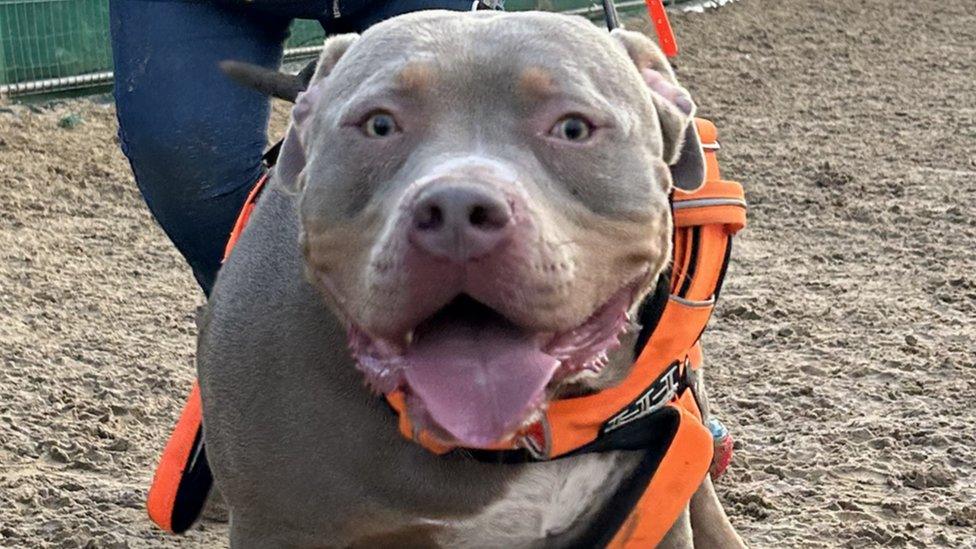'Parents hide children when they see my XL bully'
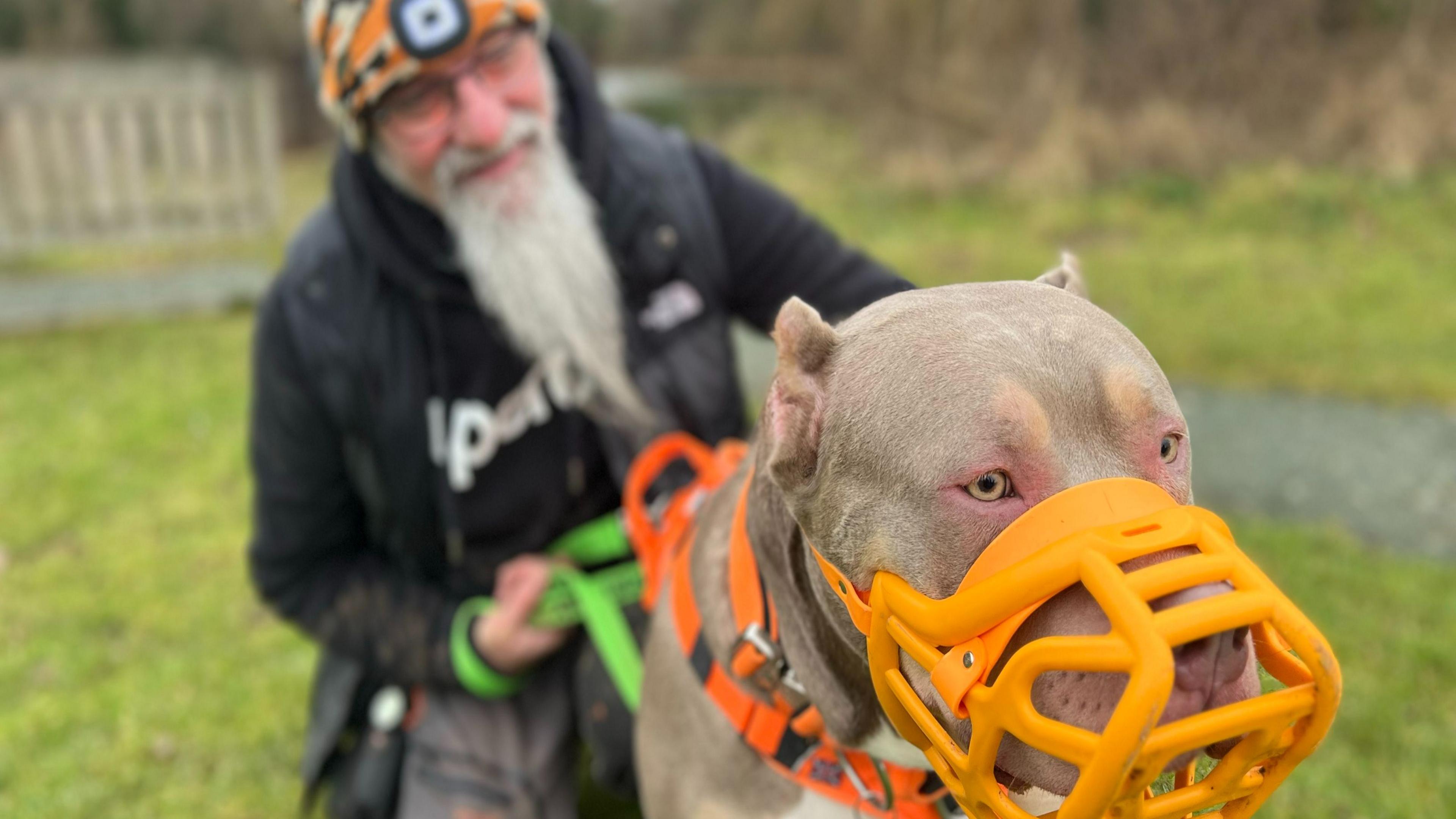
Paul Roberts' dog Bear was rescued in 2022
- Published
"I've had people hide their children behind prams," said Paul Roberts, describing what walking his exempt XL bully, Bear, has been like since a ban on the breed came into effect.
Since 1 February 2024 it has been a criminal offence to own an XL bully without an exemption certificate, and following the ban's introduction reports of cruelty and abandonment have more than doubled, according to RSPCA figures.
Mr Roberts, from Wellington, Shropshire, rescued his dog in 2022.
He was told Bear had been discovered being forced to fight in Wolverhampton, where his ears were illegally cropped with kitchen scissors.
"He was basically given up on and left outside. They cropped his ears off and made a horrific mess," Mr Roberts said.
He added that people stared at him as they drove past, adding: "I feel like wearing a T-shirt saying: 'I didn't do that to his ears.'"
Cruelty and abandonment involving XL bully type dogs has increased since the ban, with animal charity the RSPCA seeing the second highest rise in the West Midlands region, behind Greater London.
"Because of their size, there are individuals that want a dog that they can use to threaten and intimidate and use them in dog fighting," said Sam Gaines, head of companion animals at the RSPCA.
The breed is illegal to rehome, which Mrs Gaines said had left the charity "in a situation where the only option is to put the dog to sleep".
She added: "In many cases, those dogs could have gone on to be rehomed."

Pippa Adams said spaying female dogs at the wrong times could cause complications
The XL bully ban was announced on September 2023 and came into force on 1 February 2024.
It followed a number of attacks involving the breed, and the exemption scheme was introduced for people who already owned XL bullies.
Owners have to keep their dogs on leads and muzzled in public and it became illegal to breed, sell or abandon them.
In order for an owner to have an exemption for their dog, it must be neutered.
"Unfortunately, quite a lot of owners left it to the last minute," said vet Pippa Adams from PowisVets in Stourbridge.
"We were spaying them at times when we wouldn't normally, when they were in season, or slightly older or overweight. You know before you’ve even started, that dog is high risk."
'It's traumatising'
According to the animal charity PDSA, external, spaying a dog in heat is more risky because the blood vessels around the uterus become much bigger, meaning more chance of excess bleeding.
Mrs Adams described having to spay an older female Xl bully in time for the deadline, which resulted in the dog bleeding out and needing to be operated on again.
Although the dog survived, Mrs Adams said the incident was "etched into my mind... it's traumatising".
Originally all XL bullies had to be neutered by 30 June 2024, but the deadline was extended after vets raised concerns. It meant dogs that were less than seven months old on 31 January 2024 must now be sterilised by 30 June 2025.
Mrs Adams, who has been a vet for 25 years, said she had seen an increase in XL bullies recently as dogs that used to be classed as large Staffordshire bull terrier crosses, were now being typed as XL bully.
"For your average person who has a big breed that was just perfectly alright before, it has caused them a lot of trauma," she said.

Caroline Lewis said the past year had been awful for professionals working in the dog world
Caroline Lewis, a dog behaviourist who does expert witness work from Oswestry, Shropshire, said confusion about what was classed as an XL bully was causing issues.
"One case I had was the person who took the dog on, which was a rescue, was told it was a different breed but when it started to develop more, it became apparent it was an XL bully," Ms Lewis said.
"He took him to the police station and it was seized there, which was heartbreaking."
Ms Lewis showed her behaviour assessment of the dog to court and after eight months in an undisclosed location, the dog was returned to its owners.
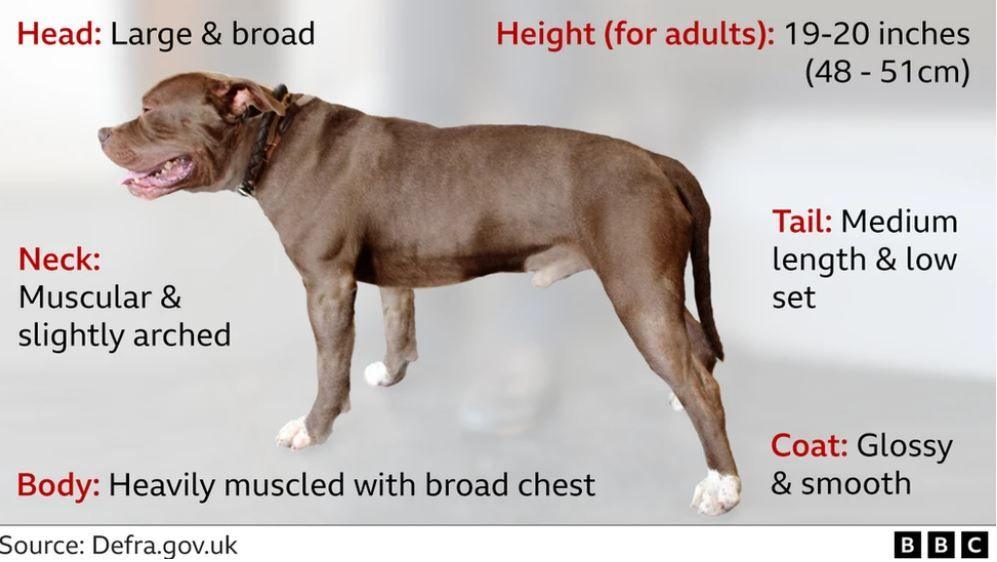
Ms Lewis also works with rescue centres, which has meant waking up to dozens of dogs in terrible situations.
"There are some days you don't want to go onto social media, you don't want to check your emails or your messages because you're being sent pictures of really harrowing stories and situations," she said.
Because the ban has made it illegal for rescue centres to take on XL bullies, Ms Lewis said she had seen owners taking to social media looking for new homes for their dogs, which is also against the law.
"It's like a tsunami... I don't think we've hit the worst of it yet," Ms Lewis said.
A Defra spokesperson said: "The ban on XL bullies is there to protect public safety and we expect all XL bully owners to comply with the strict conditions.
"Ongoing dog attacks show we need to do more to protect public safety. We will continue to encourage responsible dog ownership across all breeds of dog and to consider whether the current dog control rules are sufficient to ensure communities are protected."
Mr Roberts, Ms Lewis and Mrs Adams all agree something needs to be done to protect the public, but do not agree with breed-specific legislation.
Mr Roberts said he felt that eventually another big breed would be blamed, so training owners who had larger dogs was essential.
Ms Lewis said dog licencing and breeding regulations would work better.
Get in touch
Tell us which stories we should cover in Shropshire
Follow BBC Shropshire on BBC Sounds, Facebook, external, X, external and Instagram, external.
Related topics
- Published24 March
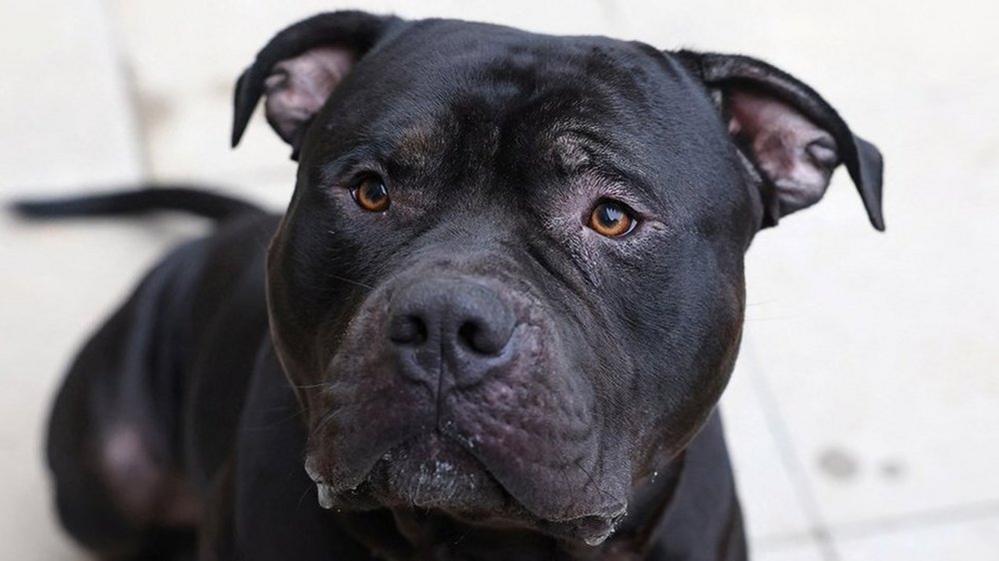
- Published29 January
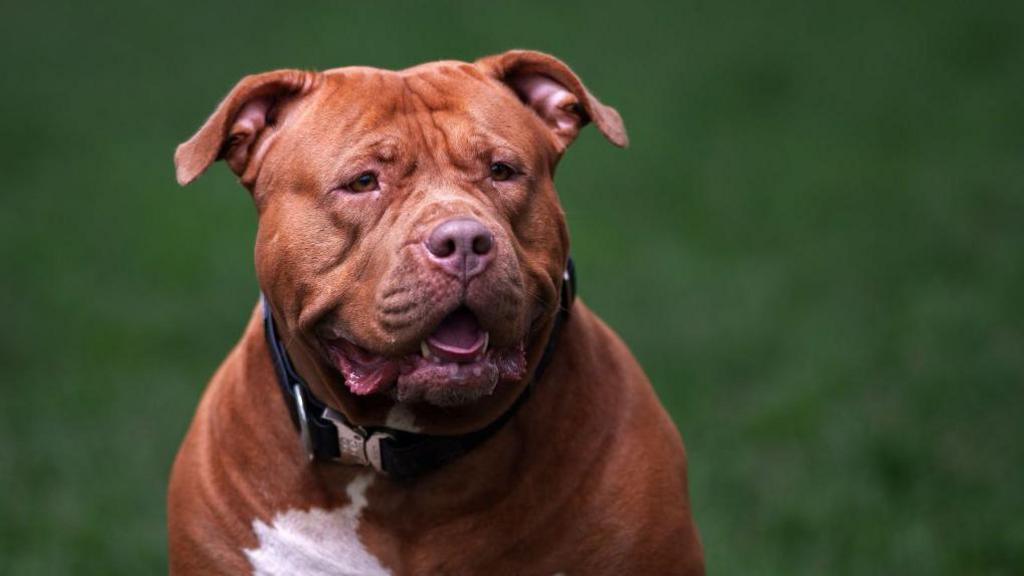
- Published19 December 2024
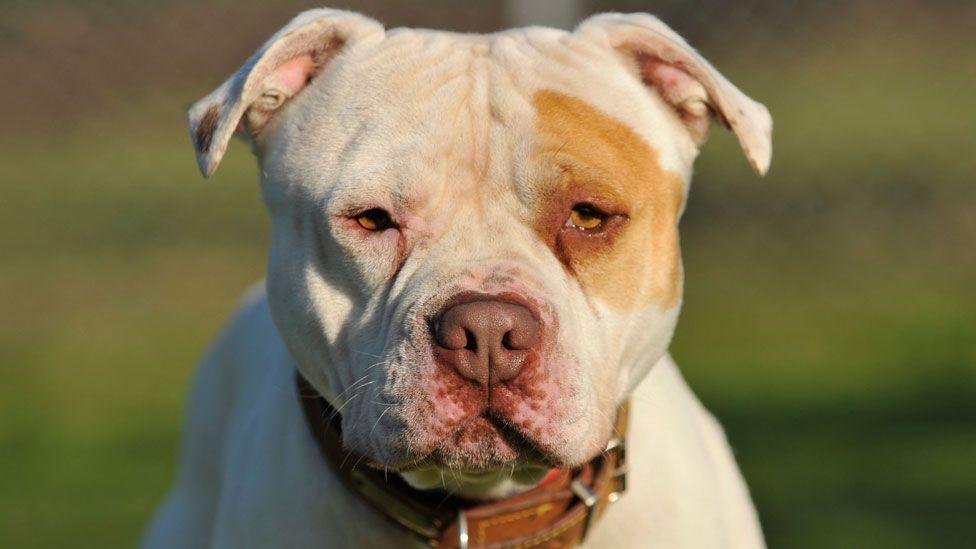
- Published30 January 2024
